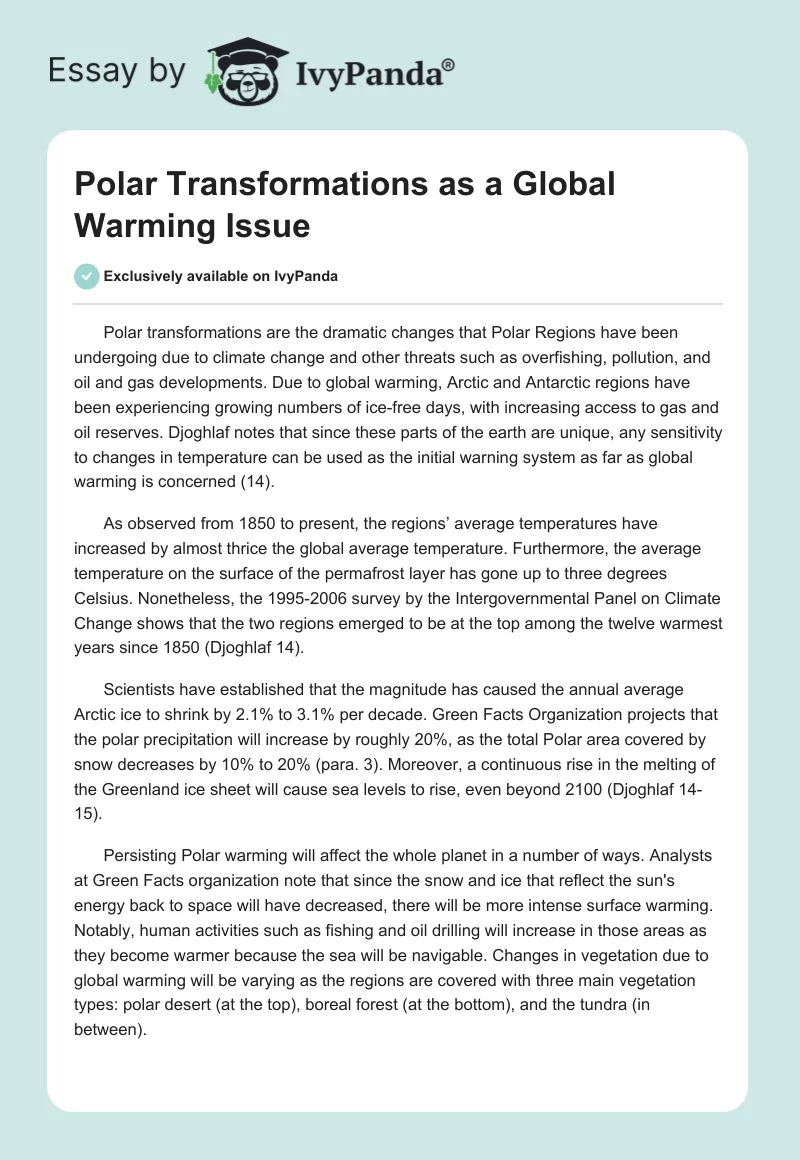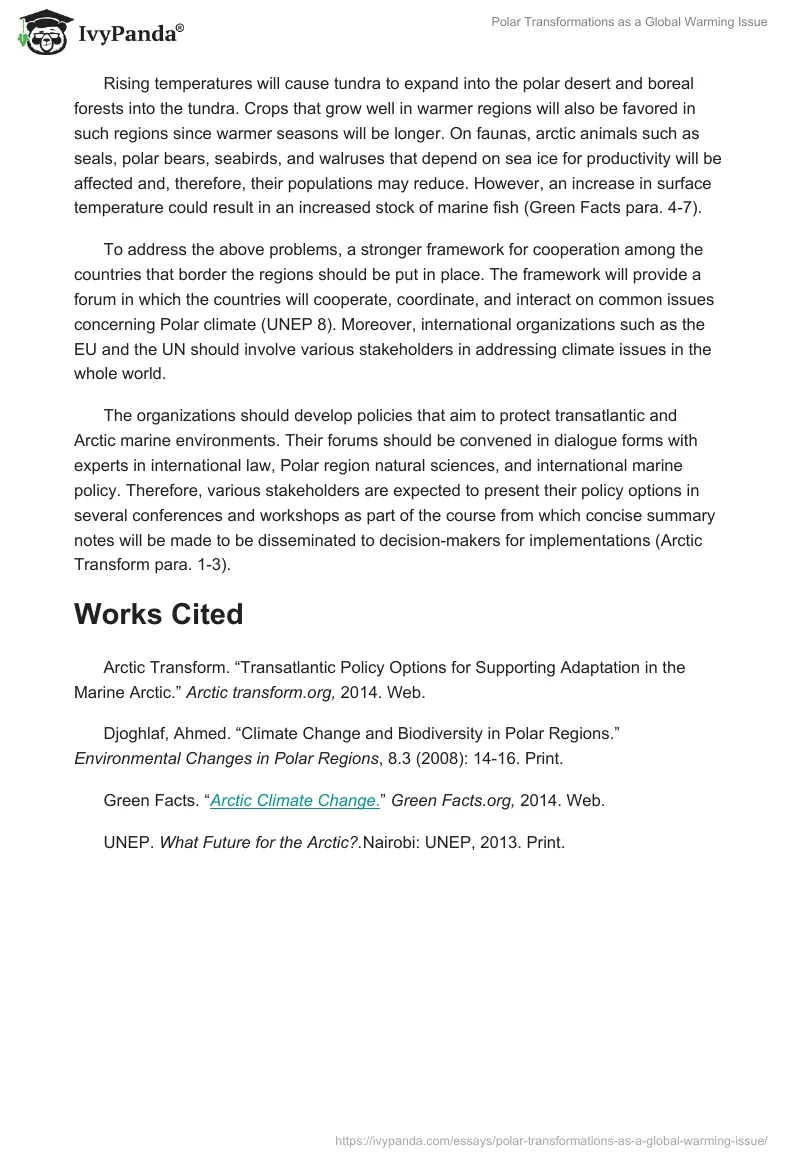Polar transformations are the dramatic changes that Polar Regions have been undergoing due to climate change and other threats such as overfishing, pollution, and oil and gas developments. Due to global warming, Arctic and Antarctic regions have been experiencing growing numbers of ice-free days, with increasing access to gas and oil reserves. Djoghlaf notes that since these parts of the earth are unique, any sensitivity to changes in temperature can be used as the initial warning system as far as global warming is concerned (14).
As observed from 1850 to present, the regions’ average temperatures have increased by almost thrice the global average temperature. Furthermore, the average temperature on the surface of the permafrost layer has gone up to three degrees Celsius. Nonetheless, the 1995-2006 survey by the Intergovernmental Panel on Climate Change shows that the two regions emerged to be at the top among the twelve warmest years since 1850 (Djoghlaf 14).
Scientists have established that the magnitude has caused the annual average Arctic ice to shrink by 2.1% to 3.1% per decade. Green Facts Organization projects that the polar precipitation will increase by roughly 20%, as the total Polar area covered by snow decreases by 10% to 20% (para. 3). Moreover, a continuous rise in the melting of the Greenland ice sheet will cause sea levels to rise, even beyond 2100 (Djoghlaf 14-15).
Persisting Polar warming will affect the whole planet in a number of ways. Analysts at Green Facts organization note that since the snow and ice that reflect the sun’s energy back to space will have decreased, there will be more intense surface warming. Notably, human activities such as fishing and oil drilling will increase in those areas as they become warmer because the sea will be navigable. Changes in vegetation due to global warming will be varying as the regions are covered with three main vegetation types: polar desert (at the top), boreal forest (at the bottom), and the tundra (in between).
Rising temperatures will cause tundra to expand into the polar desert and boreal forests into the tundra. Crops that grow well in warmer regions will also be favored in such regions since warmer seasons will be longer. On faunas, arctic animals such as seals, polar bears, seabirds, and walruses that depend on sea ice for productivity will be affected and, therefore, their populations may reduce. However, an increase in surface temperature could result in an increased stock of marine fish (Green Facts para. 4-7).
To address the above problems, a stronger framework for cooperation among the countries that border the regions should be put in place. The framework will provide a forum in which the countries will cooperate, coordinate, and interact on common issues concerning Polar climate (UNEP 8). Moreover, international organizations such as the EU and the UN should involve various stakeholders in addressing climate issues in the whole world.
The organizations should develop policies that aim to protect transatlantic and Arctic marine environments. Their forums should be convened in dialogue forms with experts in international law, Polar region natural sciences, and international marine policy. Therefore, various stakeholders are expected to present their policy options in several conferences and workshops as part of the course from which concise summary notes will be made to be disseminated to decision-makers for implementations (Arctic Transform para. 1-3).
Works Cited
Arctic Transform. “Transatlantic Policy Options for Supporting Adaptation in the Marine Arctic.” 2014. Web.
Djoghlaf, Ahmed. “Climate Change and Biodiversity in Polar Regions.” Environmental Changes in Polar Regions, 8.3 (2008): 14-16. Print.
Green Facts. “Arctic Climate Change.” 2014. Web.
UNEP. What Future for the Arctic?.Nairobi: UNEP, 2013. Print.


